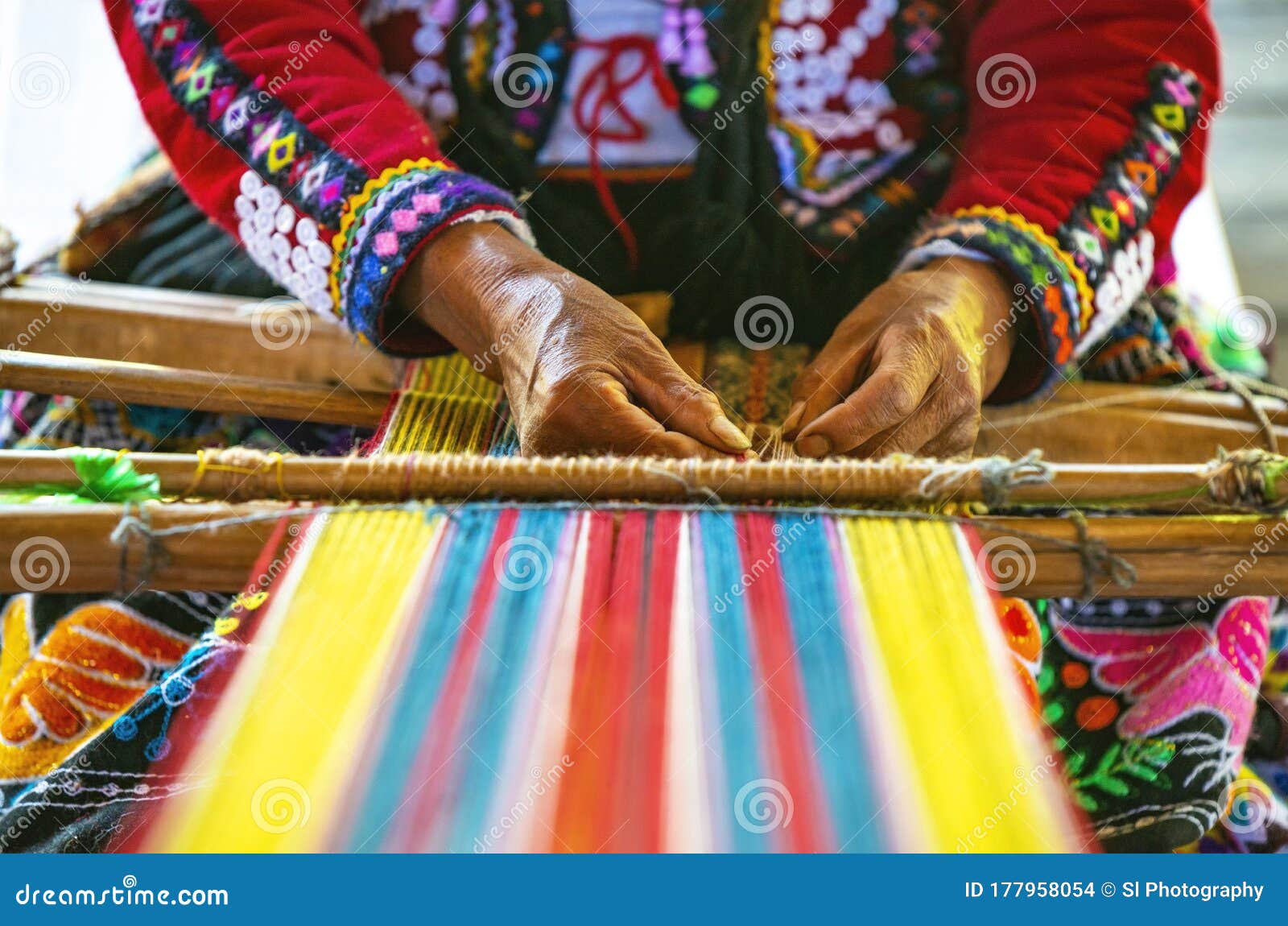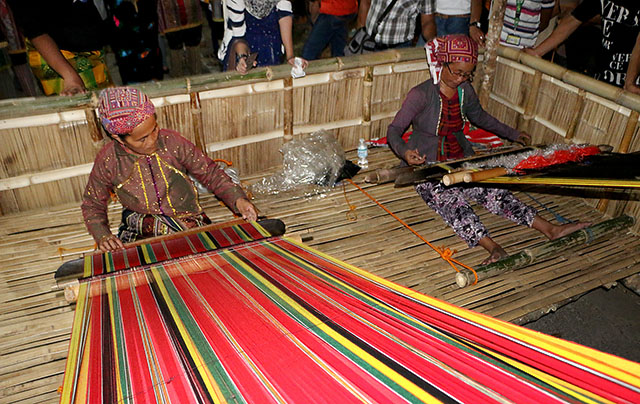
The Woven Language: Unraveling Indigenous Weaving Techniques and Traditional Materials
Across continents and millennia, the humble act of weaving has served as a profound testament to human ingenuity, cultural resilience, and an intimate connection with the natural world. Indigenous weaving techniques and the traditional materials they employ are far more than mere craft; they are intricate languages, speaking of history, identity, cosmology, and survival. This article delves into the rich tapestry of these practices, exploring the ancient methods, the sustainable materials, and the enduring cultural significance that define them.
The essence of indigenous weaving lies in its deep-rooted relationship with place. Unlike industrial textiles, which often rely on global supply chains and synthetic fibers, traditional weaving begins with the land itself. Indigenous communities have, for generations, cultivated an encyclopedic knowledge of their local ecosystems, identifying plants and animals whose fibers could be transformed into resilient, beautiful, and functional fabrics. This deep understanding informs every stage of the process, from harvesting to preparation to the final intricate weave.
Traditional Materials: From Earth to Thread
The diversity of traditional materials reflects the varied biomes indigenous weavers inhabit. In the high altitudes of the Andes, the wool of alpaca and llama has been paramount for thousands of years. Prized for its warmth, softness, and durability, alpaca fiber, in particular, comes in a natural spectrum of colors, reducing the need for artificial dyes. Quechua weavers in Peru and Bolivia expertly spin this wool, often blending it with sheep’s wool, into fine threads used for garments, blankets, and ceremonial textiles. As Juana Quispe, an elder weaver from Chinchero, Peru, once noted, "The alpaca gives us life. Her wool protects us from the cold, and in its colors, we see the mountains."
In the arid landscapes of the American Southwest, the Diné (Navajo) people have long utilized sheep’s wool, introduced by the Spanish, transforming it into iconic rugs and blankets. Their mastery of wool processing, from shearing and cleaning to carding and hand-spinning, is legendary. The natural lanolin in the wool makes their textiles remarkably water-resistant and durable, qualities essential for nomadic life.

Further north, the Indigenous peoples of the Pacific Northwest Coast ingeniously employed cedar bark, mountain goat wool, and dog hair for intricate robes and blankets, often incorporating geometric designs and animal motifs. The process of preparing cedar bark, involving soaking, stripping, and shredding, is laborious but yields a strong, flexible fiber.
Plant-based fibers are equally diverse. In Central and South America, cotton has been cultivated and woven for millennia, particularly in regions like Oaxaca, Mexico, and the Amazon basin. Its breathability and versatility make it ideal for warmer climates. The agave and yucca plants, found in arid regions, provide tough, coarse fibers suitable for mats, baskets, and sturdy cordage. In Southeast Asia and Oceania, pandanus leaves and raffia palm fibers are expertly plaited and woven into mats, bags, and traditional attire, valued for their flexibility and natural sheen. The bark cloth, or tapa, of the Pacific Islands is a unique non-woven textile, made by beating mulberry or fig tree bark into thin, pliable sheets, often decorated with intricate painted designs.
The artistry extends to natural dyeing. Before synthetic dyes, weavers meticulously extracted vibrant hues from their environment. Cochineal insects yield brilliant reds and purples, used extensively in Andean and Mesoamerican textiles. Indigo plants provide a spectrum of blues, while madder root produces reds, turmeric yellows, and various barks and leaves offer browns, greens, and blacks. The knowledge of mordants—substances that help dyes adhere to fibers—is a complex science passed down through generations, ensuring colorfastness and richness.
Ingenious Techniques: The Language of the Loom
The tools and techniques employed by indigenous weavers are as varied as their materials, yet all share a common thread: an intimate, often body-connected, interaction with the weaving process.
The backstrap loom is perhaps the most ancient and widespread of all weaving apparatuses, found across Latin America, Africa, and Southeast Asia. Its genius lies in its simplicity and portability. One end of the loom is tied to a fixed point, such as a tree or post, while the other is attached to a strap worn around the weaver’s lower back. The weaver’s body tension controls the warp threads, making the process highly intuitive and physically demanding. This direct connection between weaver and loom often imbues the textile with a unique rhythm and subtle irregularities that tell of its handmade origin. "When I weave on the backstrap loom," explains a Mayan weaver from Guatemala, "my body is part of the loom. My heart beats with the threads."
In contrast, the upright loom, prominently used by the Diné (Navajo) weavers, allows for larger, more complex designs. With the warp threads stretched vertically between two sturdy beams, the weaver stands or sits before the loom, often building the textile from the bottom up. This technique facilitates intricate tapestry weaving, where the weft threads completely cover the warp, creating bold, pictorial designs that tell stories or depict sacred landscapes.
Beyond looms, other techniques demonstrate remarkable ingenuity. Finger weaving, where threads are interlaced by hand without a loom, is common for sashes, belts, and narrow bands, particularly among Eastern Woodlands Indigenous peoples of North America. Twining, where two weft elements cross over each other to encase the warp, is fundamental to many basketry traditions but also found in textiles, especially those of the Pacific Northwest.
The complexity of design is often achieved through sophisticated weaving structures. Supplementary weft techniques, where additional weft threads are introduced to create raised patterns on the surface of the fabric, are characteristic of textiles from Laos, Thailand, and parts of Central America. Ikat, a resist-dyeing method where warp or weft threads (or both) are tie-dyed before weaving to create blurred, intricate patterns, is a hallmark of textiles from Indonesia, India, and parts of South America. Each knot and dye bath requires meticulous planning to achieve the desired motif when woven.

Cultural Significance: Weaving Identity and Story
Indigenous textiles are rarely just functional objects; they are living documents, repositories of cultural memory, spiritual beliefs, and social hierarchies. Colors, patterns, and motifs are not arbitrary; they carry specific meanings, often representing ancestral stories, natural phenomena, sacred symbols, or clan identities.
Navajo rugs, for instance, are renowned not only for their aesthetic beauty but for their deep spiritual resonance. Weavers often incorporate a "spirit line" or "weaver’s pathway" – a single, intentionally broken thread that runs from the center to the edge of the rug. This line is believed to allow the weaver’s spirit to escape the finished piece, preventing the transfer of their essence into the rug and allowing for continuous creativity. The motifs themselves, from storm patterns to corn stalks, often symbolize elements of their cosmology and way of life.
In the Andes, the pallay (designs) woven into textiles are a visual language, capable of conveying complex narratives and social status. Certain patterns might signify marriage, lineage, or a person’s role within the community. The chumpi, or woven belt, worn by Quechua women, often holds spiritual significance, believed to offer protection and connect the wearer to the earth.
West African Kente cloth, particularly of the Asante and Ewe peoples of Ghana, is another powerful example. Woven in narrow strips that are then sewn together, each color and pattern has a specific meaning. Gold signifies status/serenity; yellow, fertility/vitality; green, harvest/growth; blue, peace/harmony; red, passion/blood; black, spiritual energy/maturity. Kente was traditionally reserved for royalty and significant ceremonies, embodying the history and philosophy of the people. As King Otumfuo Nana Osei Tutu II of the Asante Kingdom asserts, "Kente is not just a cloth; it is history, philosophy, ethics, oral literature, religious beliefs, social codes, and political thought all woven into one."
Challenges and Revitalization
Today, indigenous weaving traditions face numerous challenges. Globalization, the influx of cheap machine-made textiles, and the economic pressures of modern life threaten to erode these time-honored practices. The knowledge, once passed seamlessly from elder to youth, is at risk of being lost as younger generations seek opportunities outside their traditional communities. Cultural appropriation, where designs are copied without respect for their origins or fair compensation, further exacerbates these issues.
However, a powerful movement of revitalization is underway. Indigenous communities, often supported by NGOs and fair-trade initiatives, are reclaiming and celebrating their weaving heritage. Cooperatives empower weavers, ensuring fair wages and direct market access. Educational programs are being established to teach traditional techniques and the cultural context behind them to younger generations, ensuring the continuity of this invaluable knowledge. Digital platforms are also playing a crucial role, connecting indigenous artisans directly with global audiences, fostering appreciation and economic sustainability.
These efforts recognize that preserving indigenous weaving is not merely about maintaining a craft; it is about safeguarding entire cultures, languages, and ways of knowing. Each thread spun, each pattern woven, is an act of resistance, a declaration of identity, and a profound connection to a heritage that spans centuries.
Conclusion
Indigenous weaving techniques and traditional materials represent a pinnacle of human creativity and ecological wisdom. They embody a sustainable relationship with the environment, transforming natural fibers into objects of profound beauty, utility, and meaning. From the backstrap looms of the Andes to the upright looms of the Diné, from the delicate alpaca wool to the resilient cedar bark, these practices are living testaments to the enduring power of culture and the ingenuity of the human spirit. To appreciate these textiles is to engage with a vibrant, living history—a woven language that continues to speak volumes about identity, community, and our shared human heritage. Supporting these traditions is not just an act of commerce, but an investment in the preservation of invaluable cultural treasures for generations to come.